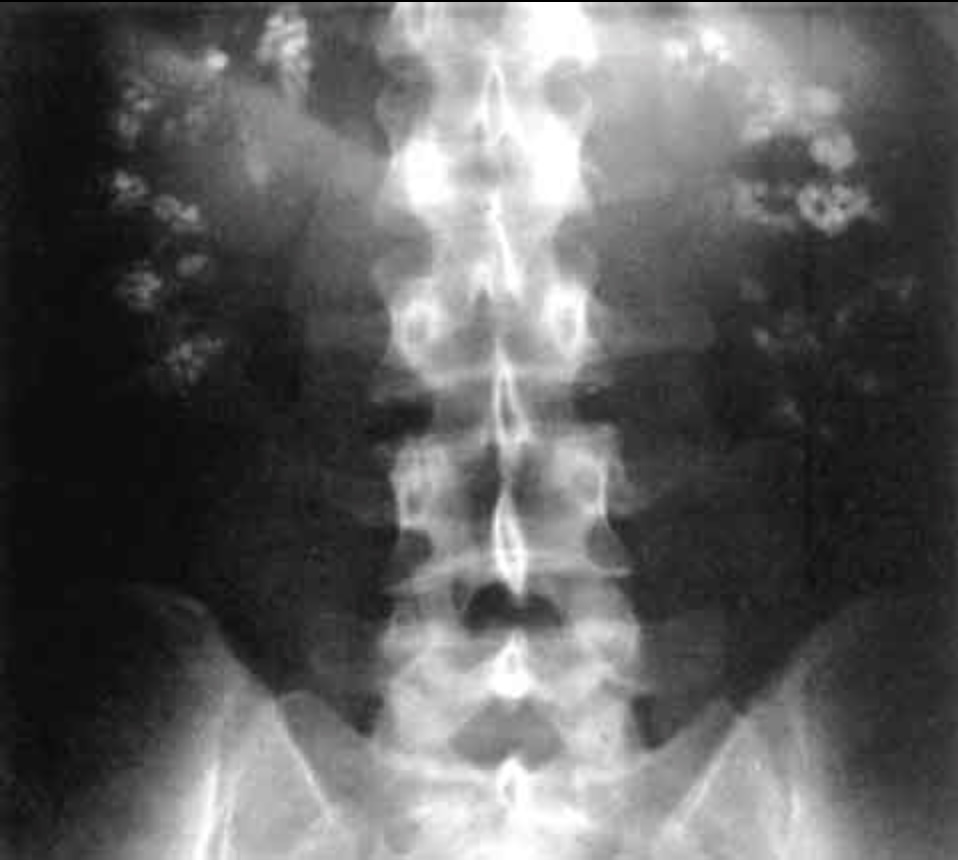Playlist
Show Playlist
Hide Playlist
Renal Tubular Acidosis (RTA) in Children: Type 4 and Review
-
Slides RTA Pediatrics.pdf
-
Download Lecture Overview
00:01 Let’s move on though to a type you do have to know about, which is type 4 RTA. 00:08 Okay. 00:09 Type 4 RTA happens as a result of lack of responsiveness to aldosterone. 00:17 So as we recall, aldosterone causes an activation of a counter exchange mechanism of sodium and potassium. 00:27 The sodium is also getting out back into the blood through just a general channel and the potassium is balanced by going back into the urine through two channels. 00:38 But it’s that pump that’s triggered by aldosterone that is responsible for both retaining sodium in the blood and spitting out potassium. 00:49 Many people think of aldosterone as having a primary role of potassium homeostasis rather than sodium or hanging on to water, although it obviously has both roles. 01:00 So in type 4 RTA, this counter exchange mechanism is not working correctly. 01:09 Normally, this would hold on to sodium and spit out potassium. 01:15 Now, patients are failing to hold on to sodium. 01:18 They will lose their sodium and they are incapable of spitting out their potassium, so the potassium levels go up. 01:27 So these patients get hyperkalemia which can be life-threatening and hyponatremia from loss of that. 01:38 So the acidosis is actually not really our biggest concern. 01:43 The acidosis is usually reasonably mild and these patients will only have a bicarbonate in the high teens or low 20s. 01:54 There are many potential causes of a type 4 RTA. 01:58 Examples include diabetic nephropathy, congenital adrenal hyperplasia and that’s certainly how we see it most often in young babies and children. 02:08 HIV nephropathy can cause this or it can be from longstanding urinary obstruction. 02:16 This condition can also be caused by drugs. 02:20 Some drugs that can cause type 4 RTA include ACE inhibitors or ACE receptor antagonists. 02:28 NSAIDs can do it. 02:29 Spironolactone, the potassium sparing diuretic can cause it and it can be caused by cyclosporine. 02:37 So our management of type 4 RTA is by necessity, a low potassium diet. 02:45 We also will give children loop diuretics because those are potassium losing diuretics and thus, will essentially be encouraging the loss of potassium. 02:55 Bicitra here is typically not needed because as I said before they’re not really all that acidotic. 03:02 The primary issue is hyperkalemia. 03:07 Okay, let’s review these three major types: Types 1, 2 and 4 together. 03:14 Type 1 is a problem with proton secretion. 03:17 It happens in the distal tubule. 03:21 On labs, you will see a high urine pH, a low serum potassium and you will see high urine electrolytes particularly calcium and potassium. 03:33 This is caused by primary autoimmune diseases, also sickle cell or lithium ingestion. 03:42 Type 2 RTA is a problem with bicarbonate reabsorption. 03:47 This occurs in the proximal tubule. 03:49 Type 2 is closer than type 1. 03:52 In these patients, they will have often an acidic or may be even normal urine pH depending on where things stand. 04:01 The serum potassium will be low or normal and you may find many things abnormal in the urine, especially if they have Fanconi’s syndrome. 04:10 This could include high glucose, uric acid, phosphate, protein, calcium or potassium. 04:17 Again, this can be inherited. 04:20 It could be as a part of Fanconi’s syndrome, which can be caused by a number of things including for example rickets or heavy metal toxicity. 04:30 Lastly, we have type 4, which is really a problem of aldosterone insensitivity. 04:36 The problem happens in the distal tubule. 04:40 The urine pH is low, but the serum potassium is high and that’s key. 04:47 This can come from a variety of different things such as congenital adrenal hyperplasia, longstanding urinary obstruction, spironolactone use or even NSAID use. 04:59 So that’s a summary of the types of renal tubular acidosis. 05:03 I hope that was helpful to you. 05:05 Thanks for listening.
About the Lecture
The lecture Renal Tubular Acidosis (RTA) in Children: Type 4 and Review by Brian Alverson, MD is from the course Pediatric Nephrology and Urology. It contains the following chapters:
- RTA Type 4
- Reviewing the RTA's
Included Quiz Questions
Patients with type 4 RTA will present with which of the following lab abnormalities?
- Hyponatremia and hyperkalemia
- Hypernatremia and hypokalemia
- Hyponatremia and hypokalemia
- Severe acidosis
- Hypernatremia and hyperkalemia
The function of which of the following is disturbed in type 4 RTA?
- Aldosterone
- Cortisol
- Antidiuretic hormone
- Carbonic anhydrase
- Sodium-potassium-chloride cotransporter
Which of the following is NOT the cause of RTA type 4?
- Sulfanamides
- Congenital adrenal hyperplasia
- Diabetic nephropathy
- Angiotensin converting enzyme inhibitors
- Spironolactone
Customer reviews
5,0 of 5 stars
| 5 Stars |
|
1 |
| 4 Stars |
|
0 |
| 3 Stars |
|
0 |
| 2 Stars |
|
0 |
| 1 Star |
|
0 |
Excellent lecture: well explained, well summarised. All key points are discussed. Thanks





